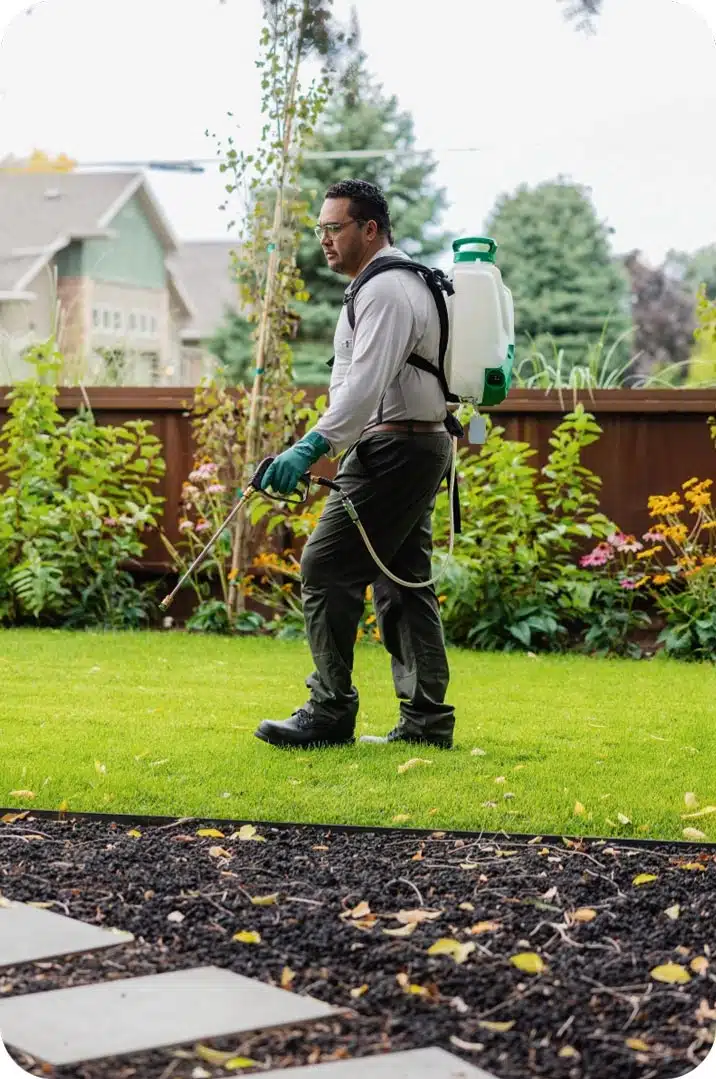Expert A1 Charlotte Bed Bug Exterminator - Top Quality Solution Ensured
Expert A1 Charlotte Bed Bug Exterminator - Top Quality Solution Ensured
Blog Article
Bed Pest Treatment Breakdown: Contrasting Chemical Vs. Non-Chemical Solutions
In the world of insect control, specifically when taking care of the consistent concern of bed pests, the selection between chemical and non-chemical treatment remedies can be a pivotal one. Both techniques supply unique advantages and disadvantages, affecting factors such as efficiency, safety and security factors to consider, and total cost. By checking out the nuanced information of each method, a more clear understanding of which path to go after in addressing a bed pest invasion can be achieved.
Effectiveness of Chemical Therapies
Chemical therapies for bed insect infestations have been widely identified for their quick and potent effectiveness in removing these insects. When taking into consideration the performance of chemical treatments, it is important to understand that they can offer a quick and comprehensive solution to a bed pest issue.
Furthermore, chemical therapies have the advantage of supplying recurring impacts, meaning that they can proceed to eliminate bed pests even after the first application. This residual activity is specifically valuable in combating any type of prospective re-infestations. In addition, the fast activity of chemical treatments can bring relief to individuals dealing with extreme bed pest invasions, permitting them to restore control of their living spaces quickly.
Safety Interest In Chemical Solutions
When utilizing chemical services for bed bug treatment is making certain the safety and security of owners and the setting,One essential element that calls for mindful factor to consider. While chemical therapies can be efficient in eradicating bed insects, they may position dangers otherwise handled correctly. One of the primary safety worry about chemical options is the prospective damage they can cause to human health. Direct exposure to particular chemicals utilized in bed bug treatments can bring about respiratory concerns, skin irritability, or other negative reactions, especially in people with pre-existing problems or sensitivities. In addition, improper application or dose of chemical pesticides can lead to poisonous residues lingering in the cured area, posing lasting wellness dangers to residents.
Furthermore, the ecological effect of chemical services is an additional significant factor to consider. Some pesticides made use of in bed bug therapies may be unsafe to helpful bugs, wild animals, and environments if they seep into the soil or water supply. It is necessary to make use of chemical treatments carefully, adhering to safety guidelines, and taking into consideration less harmful alternatives to alleviate these threats and make sure the effective and risk-free monitoring of bed pest invasions.
Advantages of Non-Chemical Approaches
Thinking about the possible security issues and ecological influence associated with chemical remedies for bed insect treatment, discovering non-chemical strategies presents an appealing alternative with several distinctive benefits. Non-chemical treatments are environmentally pleasant, as they do original site not contribute to air or water contamination, making them a sustainable selection for bug control.
Additionally, non-chemical services can be efficient in targeting bed pests, consisting of hard-to-reach areas where chemical therapies might not penetrate - A1 pest control services charlotte. Techniques such as warmth therapy, vacuuming, steam cleaning, and cushion coverings give complete obliteration without the use of dangerous chemicals.
Limitations of Non-Chemical Treatments

In addition, non-chemical treatments commonly require several applications to attain successful removal. This can be time-consuming and might not constantly guarantee total removal of all bed pests and their eggs, especially in hidden or hard-to-reach areas.
In addition, the success of non-chemical therapies greatly relies upon appropriate execution and thoroughness, which can be challenging for individuals without expert competence. Poor application of non-chemical methods may cause insufficient removal, resulting in consistent invasions and the demand for added treatments.
Consequently, while non-chemical therapies have their advantages, it is important to acknowledge these restrictions and consider them when establishing the most efficient strategy for handling bed pest invasions.
Price Contrast: Chemical Vs. Non-Chemical Options
Offered the restrictions linked with non-chemical therapies, an check these guys out essential element to examine in the context of bed insect administration is the expense comparison in between chemical and non-chemical alternatives. Chemical therapies commonly entail the application of pesticides by professionals, which can range from $250 to $900 per room, depending on the severity of the problem and the size of the location to be treated. In contrast, non-chemical therapies like warm therapy or vapor can be more costly, with prices ranging from $1,000 to $6,000 for an entire home. While the preliminary price of chemical treatments might seem lower, numerous therapies may be required to totally remove the infestation, possibly raising the general price. On the other hand, non-chemical choices may supply a more lasting and environment-friendly solution, although they can be cost-prohibitive for some people. Ultimately, when considering the price additional resources of bed insect treatment choices, it is necessary to consider the ahead of time expenditures against the performance and long-lasting sustainability of the picked approach.
Verdict

Considering the prospective safety and security worries and ecological impact connected with chemical remedies for bed pest treatment, discovering non-chemical approaches provides an appealing choice with several unique benefits.Offered the constraints associated with non-chemical therapies, an essential aspect to examine in the context of bed pest monitoring is the price comparison between chemical and non-chemical choices. In contrast, non-chemical therapies like warmth therapy or heavy steam can be a lot more costly, with prices varying from $1,000 to $6,000 for a whole home. While the initial price of chemical therapies might appear reduced, several treatments may be required to totally get rid of the problem, possibly increasing the overall price.In conclusion, when contrasting chemical and non-chemical bed bug therapy choices, it is essential to consider effectiveness, safety, advantages, restrictions, and price.
Report this page